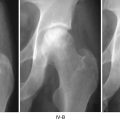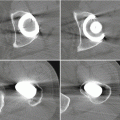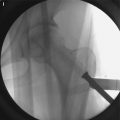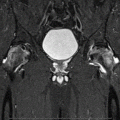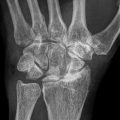Tools
Findings
Plain radiograph
(a) Ill-defined mottling/mixed sclerosis of the trabeculae
(b) Geographic and/or band-like sclerosis with or without (c, d, e)
(c) Crescent sign with (a) or (b)
(d) Microfracture with (a) or (b)
(e) Femoral head collapse with or without arthritis
MRI
(a) Geographic region of decreased marrow signal within normal fatty marrow
(b) Surrounding dense low-intensity line in all views
(c) White inner line (or double-line sign) in T2-weighted images
Scintigraphya
Abnormal (cold spots and adjacent hot areas) uptake of the radioisotope
Pathology
Microscopically confirmed pathology
The confirmed status of diagnosis was used as a binary variable, and a multiple logistic regression was used to calculate the probability of the diagnostic accuracy. Factors considered to affect the accuracy were gender, age, type of medical service (clinic, hospital, general hospital, university hospital), region (Seoul, metropolitan, others), and hospitalization. After correcting the diagnostic accuracy, the estimated nationwide prevalence of ONFH is presented as total counts and per 100,000 persons for each year from 2002 to 2006. The total number of beneficiaries of the National Medical Aid and National Health Insurance programs in Korea was used as the annual population.
7.2.3 Descriptive Epidemiology
The numbers of medical claims of ONFH from 2002 to 2006 were 15,683, 20,746, 22,304, 27,204, and 31,432, respectively. Among the 382 validation samples, 273 (71.5 %) were men and 109 (28.5 %) were women. In total, 209 (54.7 %) patients were hospitalized, while 173 (45.3 %) were treated as outpatients. The number of correct diagnoses among the medical claims was 274 (71.7 %). Significantly lower diagnostic accuracies were found for female patients and nonhospitalized patients (Table 7.2). Overall, 60.3 % of the total claims during 5 years were predicted to be true after regression analysis. The estimated prevalences of true ONFH from 2002 to 2006 constantly increased as 9,870, 12,394, 13,329, 16,230, and 18,691, respectively (Table 7.3). The prevalence per 100,000 population increased during this time period, from 20.53 to 37.96. The average annual prevalence was estimated at 14,103, corresponding to 28.91 per 100,000 population (Table 7.3). The ratio differed from that reported in other studies [19–21]. A male predominance, with a ratio of 3.9:1, was found. Bilateral involvement was found to be relatively low (37.1 %) versus the generally accepted view (50–60 %).
Table 7.2
Factors affecting the diagnostic accuracy of ONFH
Variables | Odds ratioa (95 % confidence interval) | |
|---|---|---|
Gender | Male | 1.00 |
Female | 0.40a (0.23–0.68) | |
Age (years) | <39 | 1.00 |
40–59 | 1.36 (0.63–2.94) | |
60+ | 0.83 (0.40–1.75) | |
Type of medical service | Clinic | 1.00 |
Hospital | 1.04 (0.37–2.89) | |
General hospital | 0.88 (0.38–2.04) | |
University hospital | 0.77 (0.36–1.64) | |
Region | Seoul | 1.00 |
Metropolitan | 1.84 (0.91–3.71) | |
Others | 0.78 (0.37–1.65) | |
Hospitalized | Outpatient | 1.00 |
Inpatient | 7.06a (3.99–12.52) |
Table 7.3
Estimated nationwide prevalence of ONFH in Korea
Year | Men | Women | Total | |||
|---|---|---|---|---|---|---|
Number | Per 100,000 men | Number | Per 100,000 women | Number | Per 100,000 population | |
2002 | 8.28 (8.11–8.46) | 34.35 (33.61–35.10) | 1.59 (1.51–1.67) | 6.62 (6.30–6.95) | 9.87 (9.68–10.07) | 20.53 (20.13–20.94) |
2003 | 9.88 (9.69–10.08) | 40.49 (39.70–41.30)
Stay updated, free articles. Join our Telegram channel
Full access? Get Clinical Tree
 Get Clinical Tree app for offline access
Get Clinical Tree app for offline access

| ||||

